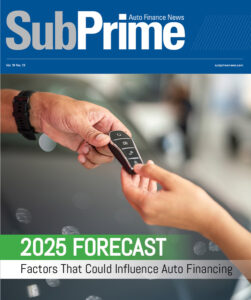Study: Pent Up Subprime Consumer Demand Could Show Itself in Used Sales
SOUTHFIELD, Mich. — A recent study by A.T. Kearney discovered that only a one-point increase in auto loan approval rates could lead to relatively healthy jump in sales.
"At current loan rates, a one-point increase in loan approval rates can increase the demand for new vehicles by as much as 350,000 units," explained Dan Cheng, partner and leader of A.T. Kearney's automotive and transportation practice.
A.T. Kearney indicated its 2010 sales volume forecast called for the moving of 11.7 million vehicles with trends pointing toward a level of approximately 16 million by 2012. Firm analysts believe approximately 20 million units of pent-up demand have accumulated since 2007. They went on to note that demand could bring on the sale of more than 9 million units during the next five years of anticipated nationwide economic recovery.
Moreover, due to the lack of financing for subprime buyers, A.T. Kearney thinks 3.5 million units of that pent-up demand could materialize as used-vehicle sales instead of new-vehicle sales.
"The increase in used-vehicle prices typically accompanies a period of economic contraction when consumers shift from new vehicle purchases to used vehicles," Cheng stated.
Cheng also pointed out a couple of indicators are in place for a steady industry recovery. Among those he listed: continued consumer need for light vehicles due to the geographical dispersion of U.S. population density around major city centers and the lack of well-developed mass transit systems as a viable alternative to light vehicles.
Most importantly, however, might be recent signs of an increase in vehicle loan approval rates.
"Credit availability will play a key role in the speed of the auto industry recovery," Cheng said.
Moving on to other segments of the A.T. Kearney study, officials also highlighted the concept of the "global car." They contend this strategy shows OEMs are increasingly turning to global platforms to achieve significant economies of scale.
"Over the next five years, the production volume of the ‘Top 30' global platforms will increase by 38 percent, a significant increase over the past five years," Cheng explained
"In 2010, eight OEMs have 12 platforms with over 1 million units — this will grow to 10 OEMs with 20 platforms over 1 million units by 2015," he added.
Delving deeper into the global platform analysis, A.T. Kearney found that when looking at 1 million units of production the strategy provides an OEM with a cost advantage of $700 per vehicle. The firm contends the primary drivers of savings are increased sourcing leverage, shared tooling and facilities and the savings associated with global development.
"The cost advantages made possible by global platforms will eventually trigger another wave of alliances and/or mergers as OEMs seek to further maximize global economies of scale," Cheng predicted.
However, the firm cautioned about "wild cards" that could derail an industry recovery in the United States and elsewhere.
"If we were to endure a European financial meltdown, a U.S.-China trade war, an extended supply chain disruption due to the Icelandic volcano, or a significant terrorist strike, certainly all bets for a solid recovery in the auto industry would be off," Cheng emphasized.
Three other significant findings were included in the A.T. Kearney study:
—Volatility of gasoline price increases can impact small car sales. The study found that small vehicle sales are highly influenced by the rate of change in gasoline prices. When the quarterly rate of change of gasoline prices exceeds 8 percent, analysts explained expectations of future gasoline price volatility are "built in" to future vehicle selection decisions — sustaining small vehicle sales for up to five years even as gas prices subsequently decline.
"Based on the study's gasoline price scenarios, small vehicle market share could range anywhere from 18 percent to 30 percent by 2015," A.T. Kearney noted. "OEMs that can flex their manufacturing capacity to meet changing consumer preferences will be in the best position to succeed."
—Suppliers can reduce economic risk. Firm analysts content most suppliers should have enough working capital to meet increased North American production levels. They determined only 8 percent by revenue of North American Tier 1 suppliers are at "high risk" of running short of working capital.
The study also found that since 2005, Tier 1 suppliers have increased the time between when parts are received to when payment is made to their Tier 2 suppliers by 21 days. Officials pointed out this situation represents a one-time cash hit to Tier 2 suppliers of approximately $8 billion.
—New CAFE requirements could incentivize OEMs to bring greener vehicles to market. Firm officials concede it could be challenging for OEMs to meet the new 2016 CAFE requirements, they believe manufacturers should take a portfolio approach and leverage four options. Those options include alternative fuel credits, incorporation of proven technologies such as turbo charging or gas direct injection into specific vehicle models, purchasing credits from other OEMs, and investing in electric vehicles to generate additional CAFE credits.
"Each OEM will be faced with developing a cost balanced portfolio solution that meets their specific product positioning requirements," A.T. Kearney concluded.

 View The Latest Edition
View The Latest Edition

